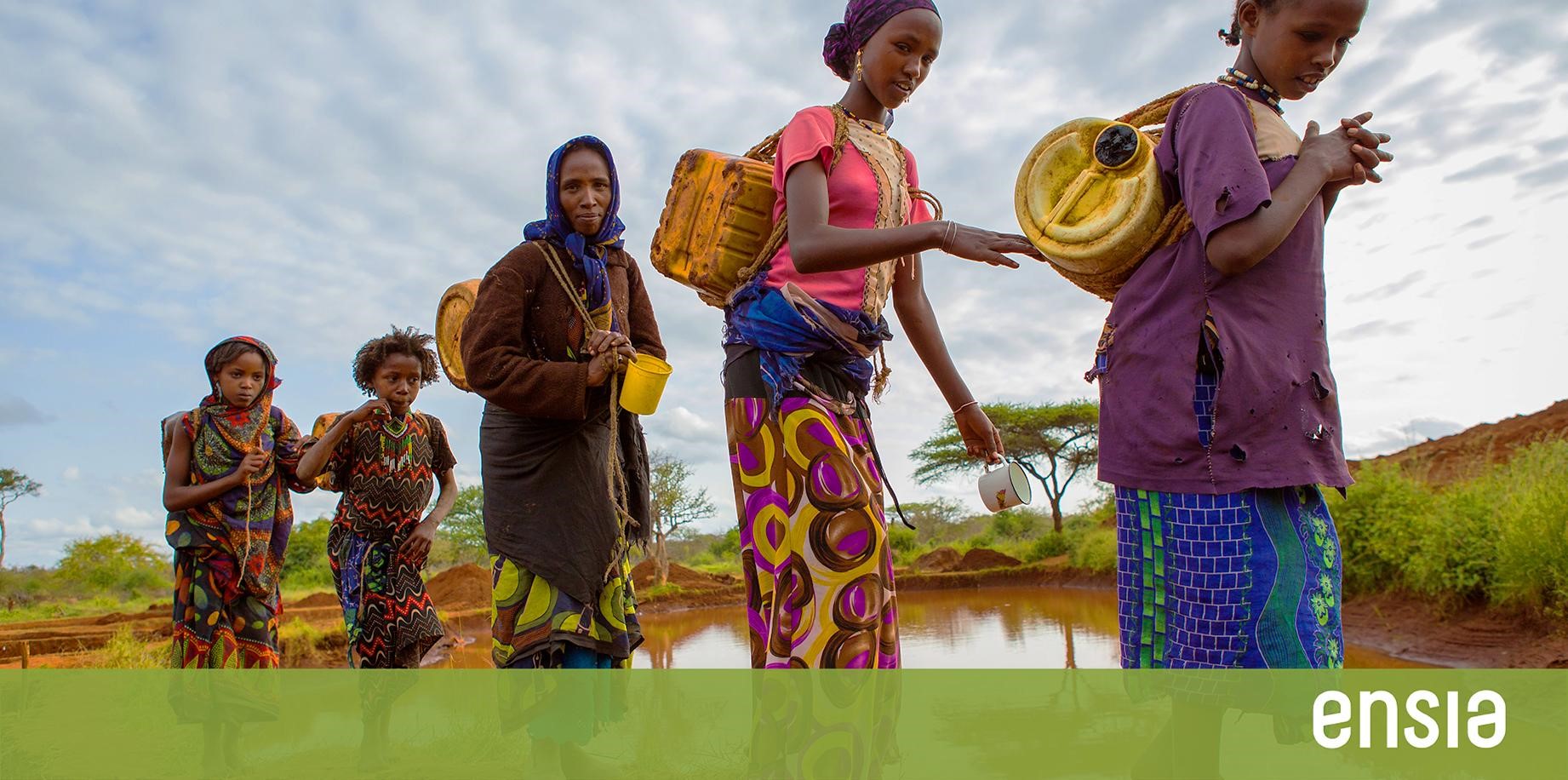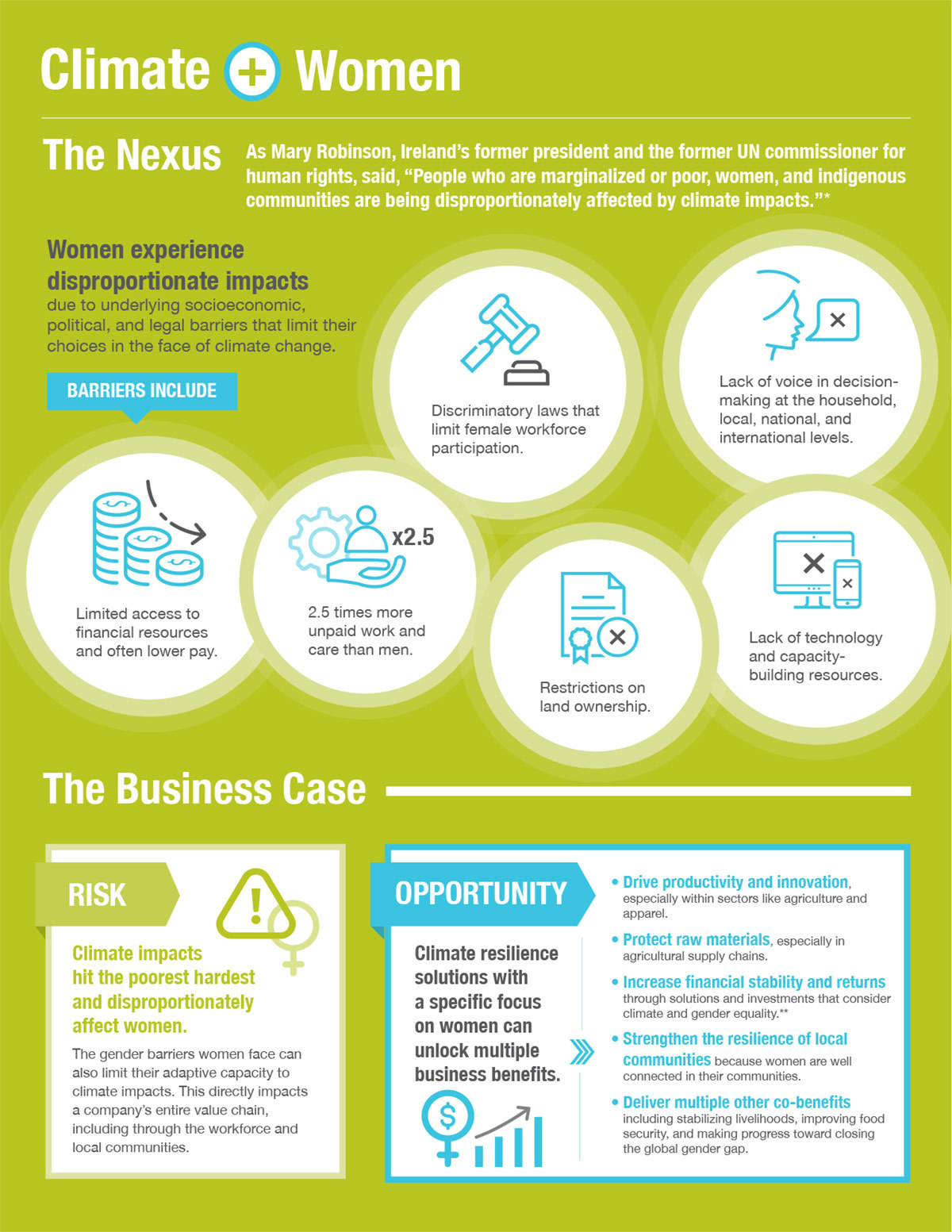Description

Disclaimer: Copyright infringement not intended.
Context
- The climate crisis is rising and does not impact everyone equally.
How does climate change impact women disproportionately?
Disproportionate Economic Burden:
- Women often bear the brunt of economic hardships caused by climate change, especially in agricultural societies. For instance, in many developing countries, women are responsible for food production and water collection. When climate change disrupts agriculture or causes water scarcity, women must work harder to provide for their families, leading to increased economic stress.
Increased Health Risks:
- Women's health can be disproportionately affected by climate change. For example, in regions where extreme weather events become more frequent due to climate change, women are at higher risk of injury or death during disasters. Additionally, changes in temperature and rainfall patterns can exacerbate health issues such as malnutrition, maternal mortality, and the spread of vector-borne diseases like malaria and dengue fever, which often affect women and children more severely.
Impact on Livelihoods:
- Climate change can disrupt traditional livelihoods, such as farming and fishing, which are often the main sources of income for women in rural areas. For example, changes in precipitation patterns or ocean acidification can reduce crop yields or fish stocks, directly affecting women who rely on these activities for income.
Increased Vulnerability to Displacement:
- Women are often more vulnerable to displacement due to climate change-related events such as hurricanes, floods, and droughts. Displacement can lead to increased risks of violence, exploitation, and loss of livelihoods for women, particularly those who are pregnant, elderly, or caregivers for children.

Limited Access to Resources:
- Climate change can exacerbate existing inequalities in access to resources such as land, water, and energy, further marginalizing women, especially in patriarchal societies where they have limited rights to property and decision-making. For example, in regions suc as in east Africa where water becomes scarce due to droughts or melting glaciers, women may have to travel longer distances to collect water, taking time away from education, work, or caring for their families.
Increased Care Burden:
- Women often bear the primary responsibility for caregiving within families and communities. Climate change can increase the care burden on women, particularly in areas affected by natural disasters or environmental degradation. For example, women may have to spend more time caring for sick family members due to the spread of diseases linked to climate change or managing household tasks in the aftermath of a disaster.
Limited Participation in Decision-Making:
- Despite being disproportionately affected by climate change, women are often underrepresented in decision-making processes related to climate adaptation and mitigation. This lack of representation can result in policies and interventions that overlook women's needs and priorities. Increasing women's participation in decision-making at all levels is essential for developing effective and equitable responses to climate change.

Reasons Why Climate Action Needs Women:
Climate action requires 100 percent of the population
- Half of the world’s population is comprised of women and girls, yet they are often left out of the conversation when it comes to climate change. But if we want to achieve the Paris Agreement goal of limiting global temperature rise to 1.5 degrees Celsius, we need everyone on board. That means more women and girls need to be empowered and involved.
- Indigenous women, in particular, have been at the forefront of environmental conservation and have invaluable knowledge and expertise that can help build resilience and reduce greenhouse gas emissions. By including more women in climate action, we can create a more sustainable and equitable future for all.
Empowering women means better climate solutions
- Women make up nearly half of the agricultural labor force in developing countries. When provided with the same access to resources as men, women can increase their agricultural yields by 20 to 30 percent. This boost in productivity not only improves total agricultural output by 2.5 to 4 percent, but it can also help reduce world hunger by 12 to 17 percent, according to the UN.
- Empowering women in agriculture can also have a positive impact on climate adaptation. By providing appropriate technology and resources, we can promote more sustainable farming and conservation practices. And by reducing poverty, we can help individuals better adapt to the effects of climate change.
- Investing in women and girls has far-reaching benefits for communities and countries. Research shows that countries with high representation of women in parliament are more likely to ratify international environmental treaties.
Women are key to building climate resilience in communities
- When it comes to building climate resilience in communities, involving women is crucial. The UN reports that communities are more successful in resilience and capacity-building strategies when women are part of the planning process.
- Additionally, women are usually first responders in community responses to natural disasters, leaders in disaster risk reduction, and contribute to post recovery by addressing the early recovery needs of their families and strengthening community building.
- By involving women in community planning and disaster response efforts, we can build stronger, more resilient communities that are better equipped to face the challenges of climate change.
Climate change affects us all, but not equally
- Climate change affects everyone, but it doesn't impact everyone equally. It is well-established that climate change has a greater impact on the world’s most vulnerable people, whether in developed or developing countries, and exacerbates existing inequalities. Women often face higher risks and greater burdens from the impacts of climate change in situations of poverty and due to existing roles, responsibilities and cultural norms.
- For example, in many societies, women are responsible for household energy, food, water, and care for the young and elderly. Particularly in developing countries, the consequences of climate change can increase the burden for women and girls, for example, causing them to travel further to obtain daily supplies, leaving less time for paid work and potentially exposing them to greater risk to their safety.
- Investing in gender equality and women's empowerment has far-reaching benefits, including environmental conservation, poverty reduction, and achieving the Sustainable Development Goals (SDGs). And by tackling climate change with a gender lens, we can also address women's rights and promote greater gender equality.

Conclusion
- Women and girls are becoming increasingly empowered to contribute to, and benefit from, climate action.
- Within the UN Climate Change process, many countries have shared how they are integrating gender across different priority sectors within their national climate action plans (Nationally Determined Contributions) and National Adaptation Plans.
Source:
https://www.thehindu.com/opinion/lead/the-climate-crisis-is-not-gender-neutral/article68047470.ece
|
PRACTICE QUESTION
Q. "Discuss the gender dimensions of participation in addressing the climate crisis. How does gender inequality impact vulnerability to climate change and the effectiveness of climate adaptation and mitigation strategies? Provide examples and suggestions for promoting gender-responsive approaches to climate action." (250 Words)
|












